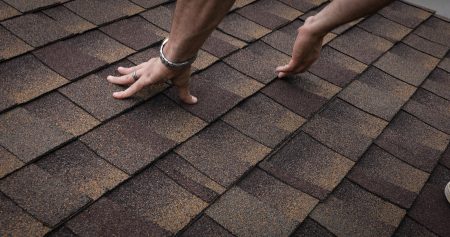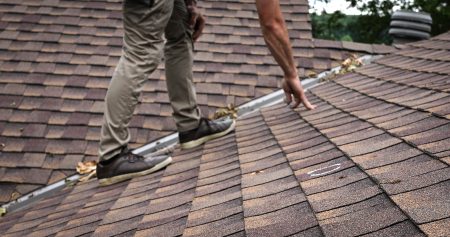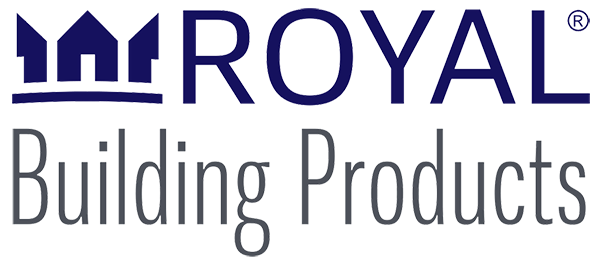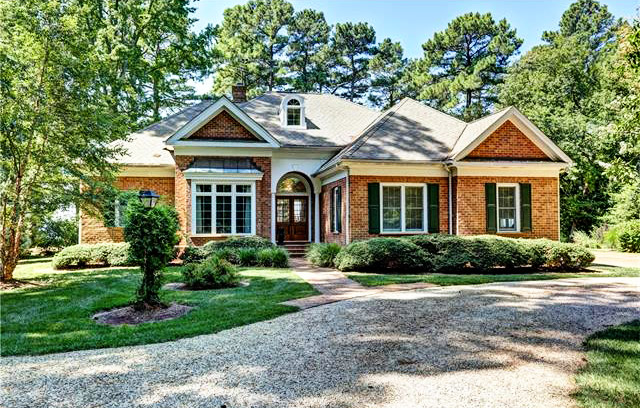Roofing with Steve Kemper Builder
Severe weather happens, trust Steve Kemper Builder.
Our experienced project managers will walk with you through the restoration process to ensure you get your property restored effectively and efficiently. We can handle everything from the shed in the backyard to the top of your home.
What sets Steve Kemper Builder apart?
Our Process
It all starts with our free roofing inspection. Once our expert Project Managers have assessed your home’s roof:
- Your Project Manager will explain the construction process, and verify all your paperwork.
- You will need to call your insurance company to make a claim.
- Your Project Manager will be on-site during the insurance adjuster’s inspection (at your request) to point out damage and answer questions about our estimate.
- After your insurance company sends their report, your Project Manager will review the insurance report with you to compare it to our findings, ensuring you understand any differences.
- Once approved, we will get materials delivered directly to your location.
- Our production staff will acquire the required permits, schedule material delivery and crews, and is available to ensure issues are handled promptly.
- Your project manager will be available during your build and will stop by occasionally to make sure the project is running efficiently and to answer any questions you may have.
- After the project is complete we will inspect the work to ensure quality and satisfaction.












Getting your roof inspected by one of our trained professionals will keep you and your family protected from future disasters.
Performance
There are a variety of factors that impact a roof’s performance. The useful life of a roofing system can be influenced by its location, material used, weather patterns, installation process, design, and exposure. Roofing Systems are comprised of many materials and add value and protection for your home.
The common materials are:
- sheathing/decking
- flashing
- underlayment
- ice and water protective barriers
- ridge vents
- ridge shingles
- other venting
After finding hail damage on a roof, some homeowners ask us whether it would make sense to hold off on repairs or replacement until they detect a leak. While we can understand the desire to put off what may seem like an unnecessary repair, our experts agree hail damage is a necessary and critical repair. Damage may seem inconspicuous at first glance, but it only takes a short time until something more noticeable happens.


What Exactly Happens to My Roof During a Severe Weather Event, Like Hail or Extreme Wind?
When a shingle gets hit by hail it forces the granules into the mating and breaks down the bond to the asphalt. Most granules start to fall off of the damaged area, at this point the asphalt layer will be exposed to weather. The sun’s ultraviolet rays will weaken the exposed spots and make them brittle. Some will start to show themselves as bruises and possibly holes in the shingles. As the seasons pass and temperatures and weather patterns change the shingles expand and contract. This can cause curling and cracking after being weakened by hail. The exposed areas are then very susceptible to leaks.
Over time different characteristics will be visible to a trained inspector. Depending on the age, product exposed, angle of the roof (pitch), and the direction of the storm, your roof can be more susceptible to damage. Thus, an inspector can tell whether the damage is new or older.
Make sure you get a roof inspection as soon as possible after a storm event. Most damage is not visible from the ground. Our trained inspectors will have the knowledge to pinpoint the issues and make calculated assessment of reparability or the need for replacement.
The common materials are:
- sheathing/decking
- flashing
- underlayment
- ice and water protective barriers
- ridge vents
- ridge shingles
- other venting
After finding hail damage on a roof, some homeowners ask us whether it would make sense to hold off on repairs or replacement until they detect a leak. While we can understand the desire to put off what may seem like an unnecessary repair, our experts agree hail damage is a necessary and critical repair. Damage may seem inconspicuous at first glance, but it only takes a short time until something more noticeable happens.

After a severe weather event, you have a limited time to make an insurance claim.
At Steve Kemper Builder, our team is standing by after severe weather to make sure that we get the restoration process started right away.
Did you know that insurance claim periods vary? Well they do. Typically, there is a set amount of time a homeowner can make a claim after the damage occurs. And unfortunately this time period can expire whether you were aware of the damage or not. Steve Kemper Builder has technology that helps pinpoint the location, size, and severity of a storm. We then communicate this information to the insurance company and get a storm date or “date of loss”. Some “major” national insurance companies only allow six months to file and claim and get projects completed.
Once leaks occur, the damage can be extensive. Potential damage from mold, electrical issues, ceiling and wall damage from water, and even personal property losses can create a headache for any homeowner. The damage can also come very quickly and often is not initially detected until it is too late.
